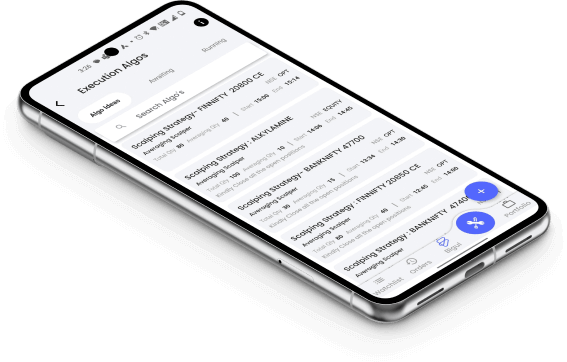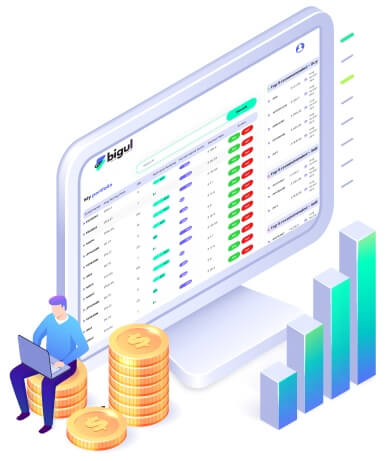Open an Account & Start Algo Trading Today!
- Flat Rs 18 brokerage
- No Cost Algo Trading
- Trade from Chart
- 30+ Indicators
- Stock SIP
- Smart Case
- Bigul Option Chain
- 300+ Pre Defined Market Watch
- IPOs
- Basket Order
What is Book Value Per Share
Are you familiar with the term "book value per share"? This financial metric measures the amount of a company's assets that would theoretically be available to shareholders if the company were to liquidate all of its assets and pay off all its liabilities.
It's an essential tool for investors, providing insights into a company's financial health and potential investment value. Understanding book value per share can help market participants to make smart decisions about where to invest your money and assess the true worth of a company's stock.
Let's dive deeper into what is book value per share and why it's important in the world of investing.
What is the Book Value Per Share (BVPS)?
Book Value Per Share (BVPS) is a financial metric used to measure the amount of a company's net assets that are attributable to each outstanding share of its common stock. It's also known as the Book Value of Equity Per Share.
In simpler terms, it represents the value of a company's assets minus its liabilities, divided by the total number of outstanding shares of common stock.
The formula for calculating BVPS is:
BVPS = (Total Shareholders' Equity - Preferred Equity) / Total Common Shares Outstanding

In this formula:
• Total Shareholders' Equity refers to the total value of a company's assets after deducting all liabilities.
• Preferred Equity represents any preferred stock or other forms of equity that have priority over common stock.
• Total Common Shares Outstanding is the total number of shares of common stock issued by the company.
BVPS provides investors with insight into the per-share value of a company's assets. It is commonly used by investors as a fundamental analysis tool to assess the financial health and intrinsic value of a company's stock. A higher BVPS suggests that the company has more assets relative to its liabilities, which can indicate a stronger financial position. On the other hand, a lower BVPS may indicate higher levels of debt or fewer assets relative to liabilities.
However, it's essential to note that BVPS is based on historical accounting values and may not reflect the current market value of a company's assets. Additionally, BVPS does not take into account intangible assets such as brand value of company or intellectual property, which can be major contributors to a company's overall value.
Example of Book Value Per Share
Let's take a look at XYZ Manufacturing as an example. They have a common equity balance of 10 million INR and 1 million outstanding shares of common stock. So, the Book Value Per Share (BVPS) is simply the common equity balance divided by the number of shares, which equals 10. When a company, like XYZ, can increase its earnings and reinvest those profits into acquiring new assets or paying off debts, the common equity grows.
For instance, if XYZ earns 500,000 and invests 200,000 in assets, the value of their common stock and BVPS increases. Similarly, if they use 300,000 to reduce liabilities, their stock price goes up too.
Another way to boost BVPS is by buying back shares from existing owners. Many companies do this using their profits. Let's say XYZ buys back 200,000 shares, leaving 800,000 outstanding. This raises the BVPS to 12.50 per share, making the common stock worth 10 million. Along with stock buybacks, increasing assets and reducing liabilities can also raise BVPS.
How to Increase the Book Value Per Share
To increase the book value per share of a company, several strategies can be implemented. Here are some effective methods:
1. Retain Earnings
One way to increase the book value per share is by retaining earnings. Instead of distributing the net profits as dividends to shareholders, the company reinvests them back into the business. This builds up shareholders' equity, which is a key component of book value.
By retaining earnings, the company can strengthen its financial position and increase the book value per share for investors.
2. Increase Asset Efficiency
Improving asset efficiency means using company assets more effectively to generate revenue. This could involve selling off non-productive assets or finding ways to make existing assets work harder.
By doing so, a company can increase its overall asset value, leading to a higher book value per share, which reflects positively on its financial health and attractiveness to investors.
3. Debt Reduction
Reducing debt is important to increase the book value per share. When a company pays off its debts, it lowers its liabilities, which boosts shareholders' equity. With less debt weighing on the company, its net worth increases.
This higher net worth, when divided by the number of outstanding shares, results in a higher book value per share, making the company more attractive to investors.
4. Share Repurchases
Another way to increase the book value per share is through share repurchases. When a company purchases back its own shares from the market, it lowers the total number of outstanding shares.
As a result, the equity is divided among fewer shares, leading to an increase in the book value per share.
This strategy can enhance shareholder value and signal confidence in the company's prospects.
5. Reduce Liabilities
Reducing liabilities, such as loans and accounts payable, helps lower the company's debt burden. As a result, there is a decrease in the company's total liabilities, which increases shareholders' equity—the difference between assets and liabilities.
With a higher shareholders' equity, the book value per share rises because each share represents a larger portion of the company's net worth.
This strategy enhances financial stability and boosts investor confidence in the company's long-term prospects.
Limitations of Book Value Per Share
The book value per share is a valuable metric for investors, but it's super important to recognize its limitations. Here are some key limitations to consider:
1. Intangible Assets
The book value per share doesn't include intangible assets like brand recognition and patents. These assets often contribute significantly to a company's overall value but aren't recorded on the balance sheet.
As a result, the book value per share may underestimate a company's true worth, especially in industries where intangible assets play a crucial role.
It's important to consider these intangible assets separately when evaluating a company's financial health.
2. Historical Cost Basis
The book value per share is based on historical accounting data, which may not reflect the current market value of assets. This means that the values of assets recorded in the company's financial statements might not accurately represent their actual worth in today's market.
As a result, the book value per share might not fully capture the true value of a company, especially in industries where asset values change rapidly over time.
3. Market Dynamics
Market dynamics, like supply and demand, investor sentiment, and future growth prospects, aren't considered in book value per share.This means it may not show the true value of a company as perceived by the market.
For example, a company with strong growth prospects may have a higher market value than its book value per share suggests.
Thus, investors should consider market trends and future potential alongside book value per share when making investment decisions.
4. Variations Across Industries
Comparing book value per share across different industries can be tricky because each industry has its own way of managing finances and assets.
For example, technology companies might invest heavily in research and development, while manufacturing companies may focus more on physical assets like machinery.
These differences can make it hard to accurately assess whether a company's book value per share is high or low compared to others in its industry.
5. Distorted by Debt and Equity Structures
Companies with significant debt or complex equity structures can distort book value per share. High debt levels increase liabilities, reducing shareholders' equity and potentially lowering book value per share.
Similarly, preferred stock or other equity instruments may dilute common shareholders' claims on assets, affecting book value per share calculations.
As a result, investors should be cautious when interpreting book value per share for companies with complex capital structures.
Difference Between Market Value Per Share and Book Value Per Share
When it comes to evaluating the worth of a company's stock, investors often rely on two key metrics: market value per share and book value per share. These metrics provide different perspectives on the value of a company's stock, and understanding the differences between them is essential for making informed investment decisions.
Here's a table that shows how Market Value Per Share and Book Value Per Share are different:
Aspect
Market Value Per Share and Book Value Per Share
Definition
Represents the current trading price of a company's stock in the market.
The theoretical value of a company's assets minus its liabilities, divided by the number of outstanding shares.
Calculation
Market capitalization divided by total outstanding shares.
(Total assets - Total liabilities) / Total outstanding shares.
Reflects
Investor sentiment and market expectations about the company's future prospects.
The historical cost of a company's assets and liabilities.
Impact of Intangible Assets
Takes into account the value of intangible assets such as brand reputation, intellectual property, etc. Does not account for the value of intangible assets.
Usefulness
Provides insights into investor sentiment and market expectations.
Offers a conservative measure of a company's worth based on its tangible assets.
Comparison with Book Value
May be higher or lower than book value per share depending on market factors and investor sentiment.
Often higher than book value per share, especially for companies with significant intangible assets.
Bottom Line
Knowing the book value per share can give you a clearer picture of a company's financial standing and its potential as an investment. It's a valuable tool for investors to assess the true worth of a stock and make informed decisions.
And when it comes to investing, having the right tools and resources can make all the difference. Consider using the Bigul trading platform to streamline your investment process and access valuable insights to help you succeed in the market.

Download Bigul Trading App!
Supercharge your trading on the go with the Bigul Trading App! Download now for instant access to cutting-edge features, real-time insights, and unparalleled convenience.













